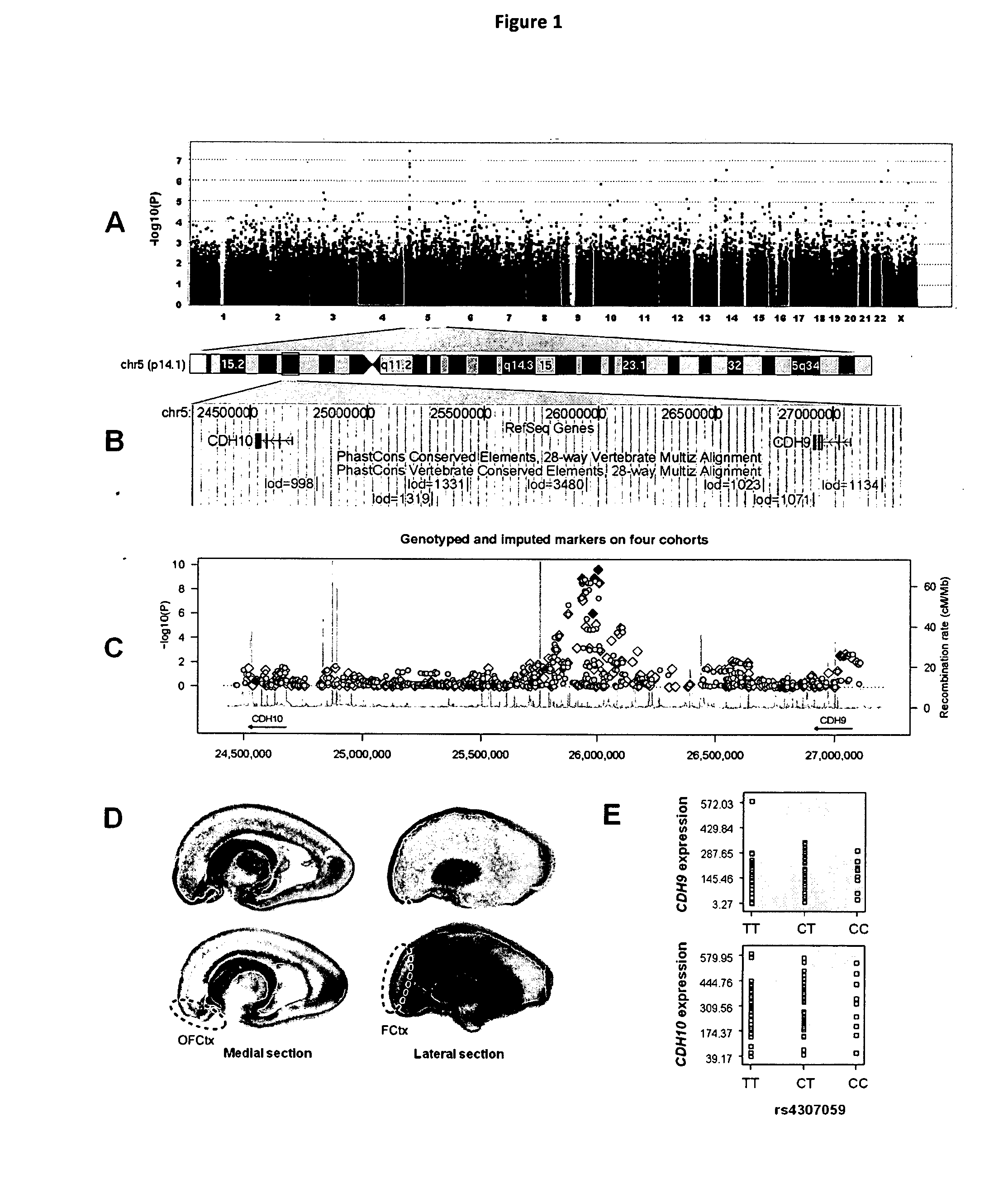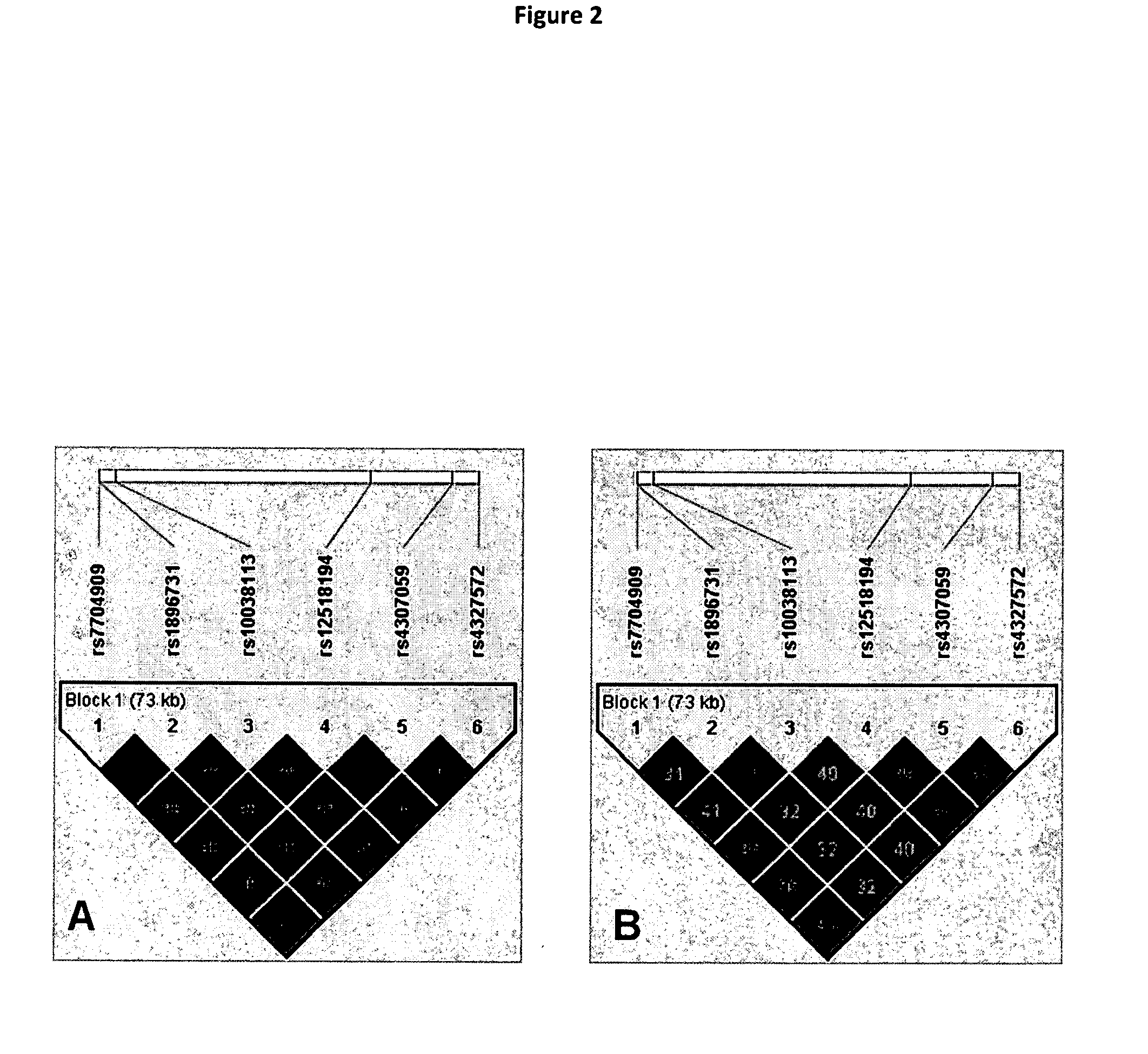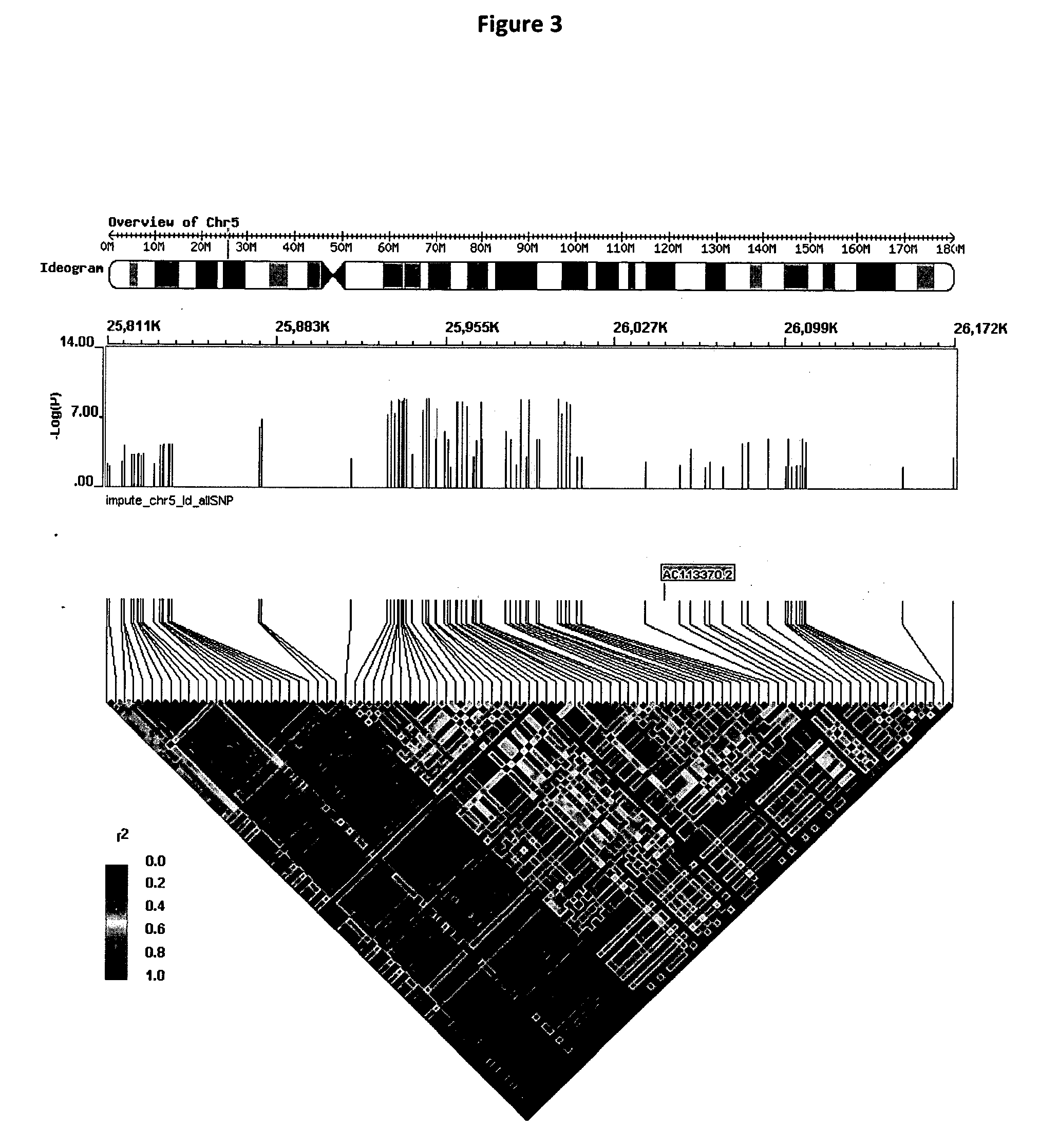Genetic Alterations Associated with Autism and the Autistic Phenotype and Methods of Use Thereof for the Diagnosis and Treatment of Autism
a genetic alterations and autism technology, applied in the field of genetics and the diagnosis and treatment of autism and autism spectrum disorders, can solve the problems of lack of awareness, social imitation and symbolic play difficulties, and place an immense economic burden on society, and achieve the effect of increasing the risk of autism
- Summary
- Abstract
- Description
- Claims
- Application Information
AI Technical Summary
Benefits of technology
Problems solved by technology
Method used
Image
Examples
example i
References for Example I
[0111]1. Chakrabarti, S. & Fombonne, E, Pervasive developmental disorders in preschool children. Journal of the American Medical Association 285, 3093-3099 (2001).[0112]2. Chakrabarti, S. & Fombonne, E. Pervasive developmental disorders in preschool children: confirmation of high prevalence. Am J Psychiatry 162, 1133-41 (2005).[0113]3. Jones, M. B. & Szatmari, P. Stoppage rules and genetic studies of autism. J Autism Dev Disord 18, 31-40 (1988).[0114]4. Ritvo, E. R. et al. The UCLA-University of Utah epidemiologic survey of autism: prevalence. Am J Psychiatry 146, 194-9 (1989).[0115]5. Bailey, A. et al. Autism as a strongly genetic disorder: evidence from a British twin study. Psychol Med 25, 63-77 (1995).[0116]6. Klauck, S. M. Genetics of autism spectrum disorder. Eur J Hum Genet. 14, 714-20 (2006).[0117]7. Vorstman, J. A. et al. Identification of novel autism candidate regions through analysis of reported cytogenetic abnormalities associated with autism. Mo...
example ii
References for Example II
[0169]1. Abrahams, B. S. & Geschwind, D. H. Advances in autism genetics: on the threshold of a new neurobiology. Nat Rev Genet. 9, 341-55 (2008).[0170]2. Autism and Developmental Disabilities Monitoring Network. http: / / www.cdc.gov / mmwr / pdf / ss / ss5601.pdf. (2007).[0171]3. Bailey, A. et al. Autism as a strongly genetic disorder: evidence from a British twin study. Psychol Med 25, 63-77 (1995).[0172]4. Lauritsen, M. B., Pedersen, C. B. & Mortensen, P. B. Effects of familial risk factors and place of birth on the risk of autism: a nationwide register-based study. J Child Psychol Psychiatry 46, 963-71 (2005).[0173]5. Sykes, N. H. & Lamb, J. A. Autism: they quest for the genes. Expert Rev Mol Med 9, 1-15 (2007).[0174]6. Gupta, A. R. & State, M. W. Recent advances in the genetics of autism. Biol Psychiatry 61, 429-37 (2007).[0175]7. Freitag, C. M. The genetics of autistic disorders and its clinical relevance: a review of the literature. Mol Psychiatry 12, 2-22 (2007...
example iii
Screening Assays for Identifying Efficacious Therapeutics for the Treatment of Autism and ASD
[0206]The information herein above can be applied clinically to patients for diagnosing an increased susceptibility for developing autism or autism spectrum disorder and therapeutic intervention. A preferred embodiment of the invention comprises clinical application of the information described herein to a patient. Diagnostic compositions, including microarrays, and methods can be designed to identify the genetic alterations described herein in nucleic acids from a patient to assess susceptibility for developing autism or ASD. This can occur after a patient arrives in the clinic; the patient has blood drawn, and using the diagnostic methods described herein, a clinician can detect a CNV as described in Example I, or a SNP in the CDH10 and CDH9 regions of chromosome 5 as described in Example II. The information obtained from the patient sample, which can optionally be amplified prior to asses...
PUM
| Property | Measurement | Unit |
|---|---|---|
| size | aaaaa | aaaaa |
| restriction fragment length polymorphism | aaaaa | aaaaa |
| ribonucleic acid | aaaaa | aaaaa |
Abstract
Description
Claims
Application Information
 Login to View More
Login to View More - R&D
- Intellectual Property
- Life Sciences
- Materials
- Tech Scout
- Unparalleled Data Quality
- Higher Quality Content
- 60% Fewer Hallucinations
Browse by: Latest US Patents, China's latest patents, Technical Efficacy Thesaurus, Application Domain, Technology Topic, Popular Technical Reports.
© 2025 PatSnap. All rights reserved.Legal|Privacy policy|Modern Slavery Act Transparency Statement|Sitemap|About US| Contact US: help@patsnap.com



